Designing kids playrooms is an absolute joy! Children are so invested in the spaces that are theirs, and they’re never afraid to play with bold colors and whimsical accessories. We love having our clients’ kiddos involved in the design process. Kids’ playrooms are the perfect place for fighting imaginary beasts, setting up forts, working on homework, and hanging out with friends. It’s a place that should inspire their creativity with a designated spot for both study and fun. A playroom should be playful in every way, but it also needs to be functional.
When designing for kids, consider how they’ll use the space now and in the future. If they love reading or playing video games, incorporate a cozy seating area with pieces that are easy to rearrange. If your kids love drawing, add a cork board accent wall for them to display their artwork. A chic, but functional playroom is a space that seamlessly blends sleek storage with high-end essentials and lots of color. It should give your kids space to work and play no matter what age they are. And even though the space should be functional, remember it’s still a place for your kiddos. So don’t be afraid to have some fun when creating kids spaces! Here are a few of our ideas about how to design a stylish and functional playroom that will grow with them.
10 Easy Ways to Design a Playroom Your Kids Will Love for Years to Come
#1 Start with a Neutral Palette and Use Their Favorite Colors in Accents
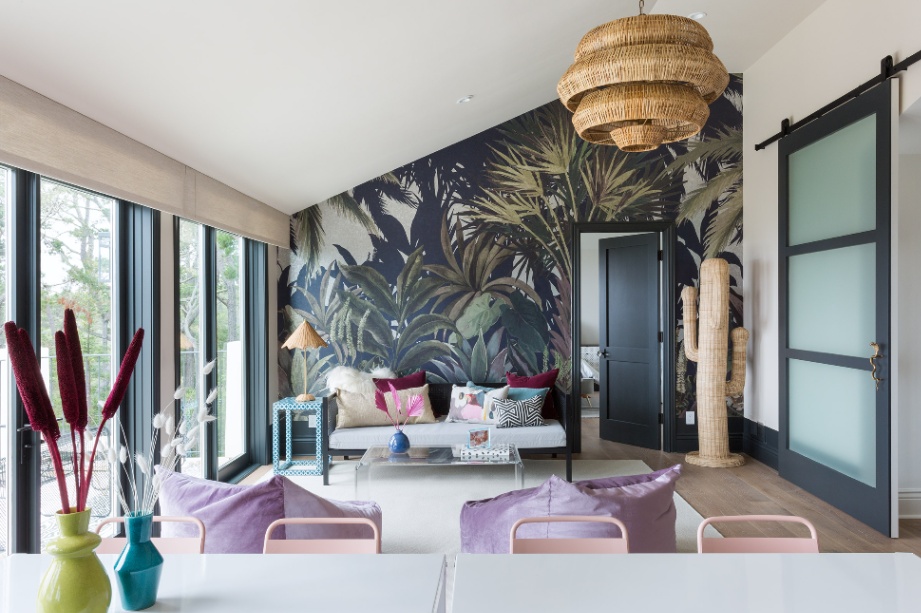
First on our list of playroom design tips is to start with a neutral palette. Then, you can add accents of your kids’ favorite colors in pillows, rugs and feature walls. One of the most important aspects to consider when designing for kids is color. Because you want to create a space they love now but will also love later on, starting with a neutral palette is the key.
When you ground a kids’ playroom in contrasting beiges and whites, colors become more versatile. Oranges mixed with blues, pinks, and purples are a few of my go-to colors! These hues are known to help boost their imagination, stimulate their creative thinking abilities, and promote openness and focus. They’re perfect for creating a warm, energizing space your kids will love being in.
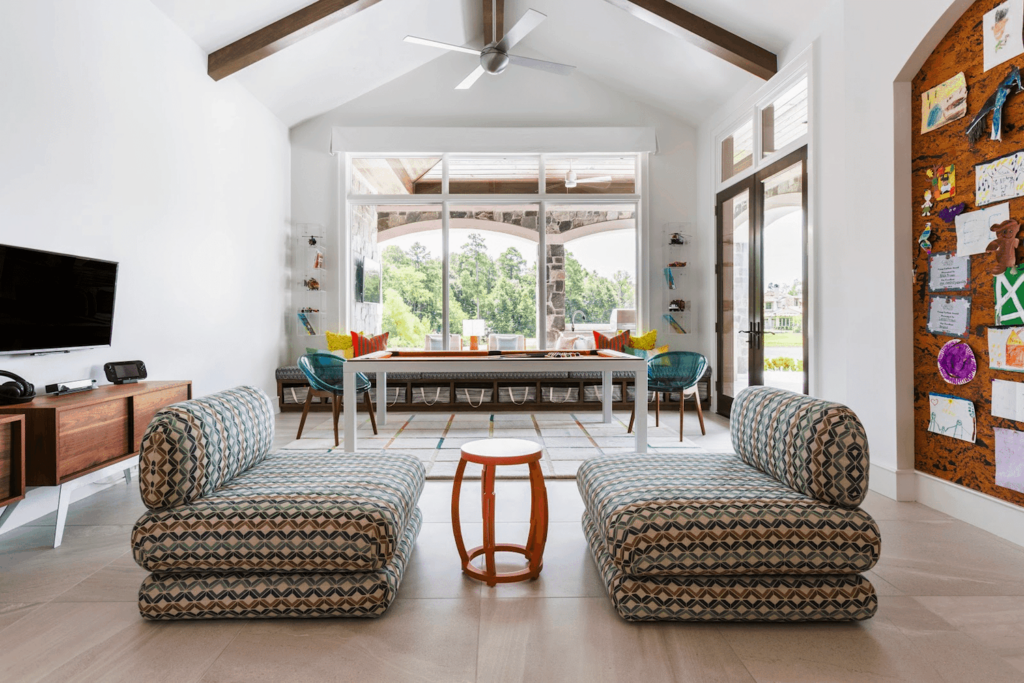
Because these colors are so bold, you’ll need to pair them with neutral tones. Crisp white walls with warm wood floors provide a fabulous backdrop for these bright colors to really pop! And by using a neutral base, it makes the space much easier to update as they get older. Think about how you can easily update and transform your living room with a seasonally-hued throw or decorative pillow. The same principal applies to spaces for your little ones!
#2 Pick a Couple Patterns When Creating Kids Spaces
When it comes to patterns, stay within the same family. Looking at the playroom below, you’ll see that we chose stripes as our standout pattern. While you see stripes on the pillows, rugs and lamp, the room still feels polished because there is one unifying theme throughout.
I recommend sticking to just one or two patterns — especially if you’re using a lot of color. The playroom should fit your kiddo’s needs, but still be sophisticated. A striped lamp, a vibrant rug, or a statement wallcovering add playful touches and keep the room feeling fresh and youthful.
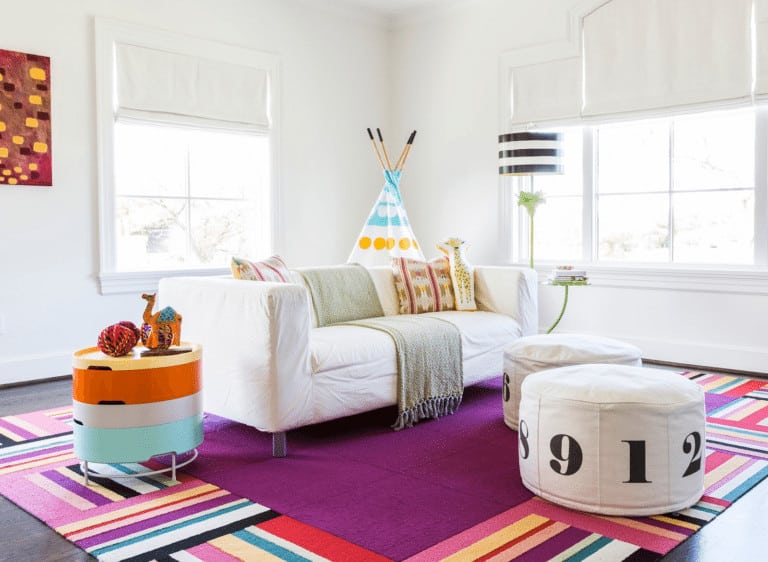
For this striped playroom, we wanted to create a light-filled space with comfy seating and unique details. To do so, we painted the walls white, lightening the dark wood floors and reflecting the natural light coming in through the windows.
Always honor the natural surroundings of your space, whether that’s sunlight or a great view. The area rug pulls together the colorful side table — which disassembles into fun trays — the wall art, and the sofa’s accent pillows. This chic playroom is anything but boring!
#3 Add Sleek, Grown-Up Storage Solutions When Designing for Kids
Whether your kids are doing arts and crafts, homework, or simply hanging out with friends, having a place to put everything is essential. Built-ins, shelves, drawers, and cabinets are a great way to keep things organized and out of the way. But we also love something a little more unexpected like these personalized, locker inspired cabinets.
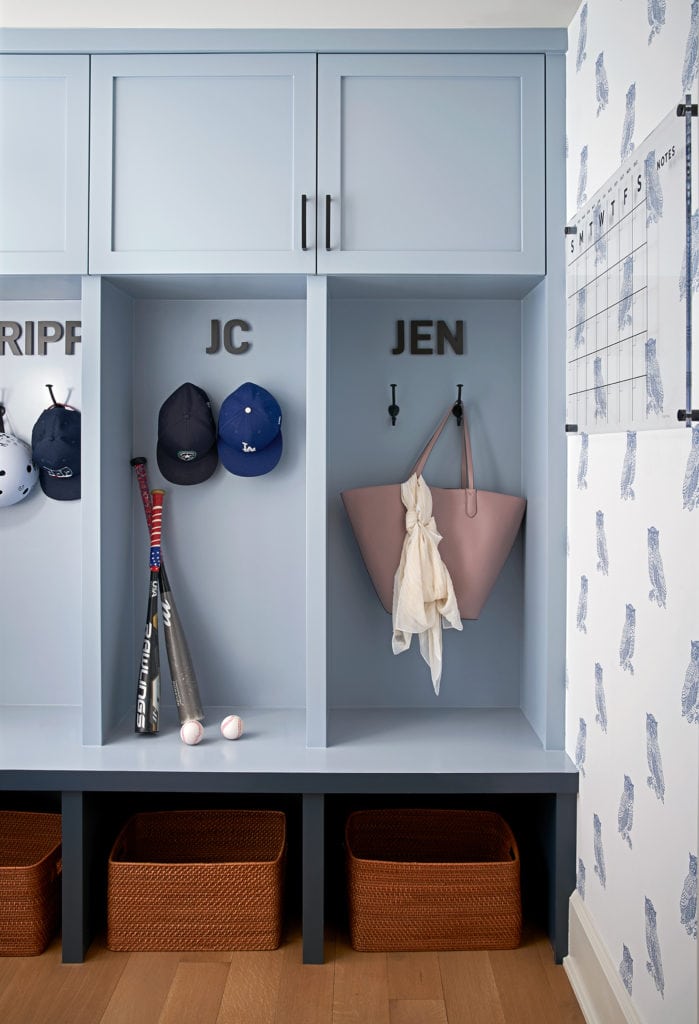
They’re the perfect place for your children to store their backpacks, sports equipment or art supplies. These unique cabinets are easy to clean and will make your kids excited about cleaning up. We find that anytime you can bring a touch of adulthood to kids, they instantly fall in love.
Plus, you can rest assured they won’t outgrow them. The bench gives them a designated spot to put on their shoes and prep for the day. This way, we add functionality to this small space that makes good habits easy to adopt. These cabinets are fabulous for keeping your kids clutter under control.
Bonus Tip: Make Storage Age-Appropriate With Soft Bins and Labeled Boxes
If you have young children — i.e. toddler or preschool age — consider swapping hard-edged storage bins for cloth versions. Little kids — who might have trouble grabbing plastic or wooden boxes — have an easier time handling rope baskets and soft bins.
Another great storage tip for families with mixed-age kids is to keep toys for older children — like puzzles and board games — on higher shelves. Use opaque containers with worded labels for older children. For younger children, choose clear or color-coded containers with symbols of the toys, books or games inside.
#4 Create Even More Functional Space with a Loft
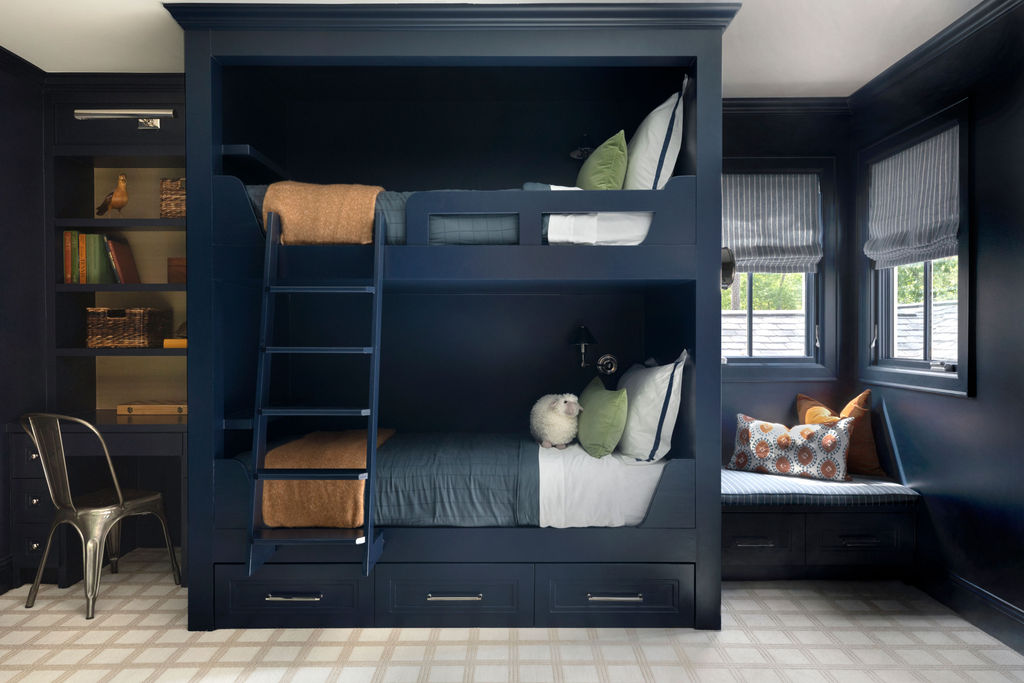
As a mom to twin girls, Laura knows how important space is.(She always needs two of everything!) But having a playroom full of furniture can mean less space for them to play. The great news is that by getting a little creative, you can provide lots of space in their bedrooms, while still keeping everything organized. Start with clever stowaway places to maintain cleanliness, organization, and flow. Storage drawers can be added under the bed, or you can build shelves and cabinets into the bed or wall. This is a fabulous way to add more space without adding extra furniture.
Our go-to space creator is to add a bunk bed or loft. This is a great way to strategically use the space you already have, especially if you have twins or children similar in age. Use the space underneath the bunk bed to create a lounge area or a study spot. Your children will love having things out of the way, so they have more room to play. Lofts allow children to imagine their rooms are all-purpose studios. It’s a glimpse of that adult future some kids equate with responsibility and independence. It also gives them the opportunity to take ownership and have pride in their belongings.
#5 Use High-Performance Fabrics
When it comes to designing a chic kids playroom, the type of fabric you use is important. Investing in fabulous fabrics that can stand up to the everyday use of active boys and girls is a must. One of the best fabrics you can use is a high-performance fabric. We used high-performance fabrics in the pool house pictured below. These fabrics stand up to kids; messes and to the water that might splash from the pool!
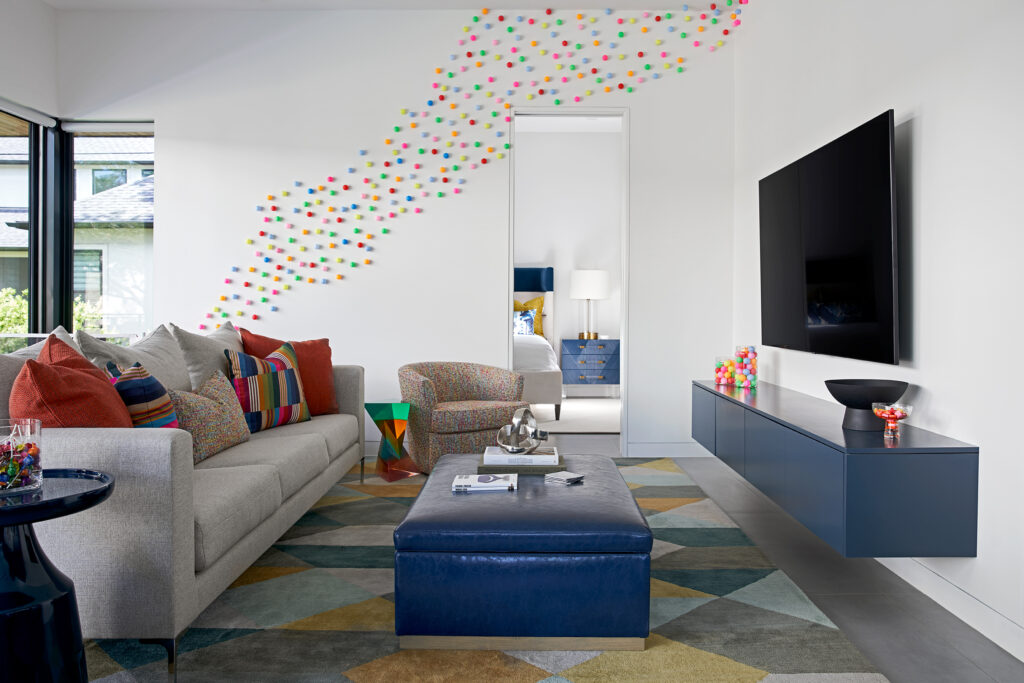
What we love about high-performance fabrics is that you don’t have to sacrifice style for function. These unique fabrics protect your furniture from being damaged by paint, crayons, and spills. You can use this type of fabric on everything from sofas to chairs, footstools and even drapery! They create soft, luxe pieces that you and your kids will love. If you have toddlers or infants, wrapping hard corners with padded high-performance fabrics is a great way to baby-proof in style.
When you’re designing kids’ playrooms, function, storage, high-end essentials, and color are a few of the key elements to consider. Remember to incorporate functional pieces they can use, while relaxing and studying. Make it easy for them keep their things organized and clean, so they have space to play. Select fabrics and furnishings that can withstand everyday use.
Most importantly, make sure the playroom is fun, relaxing and reflects their personality. Don’t be afraid to keep the accessories and toys bright and colorful. You want them to enjoy their playrooms, so it’s important they have a say in what goes into one!
#6 Choose Scratch and Stain-Resistant Finishes When Designing Spaces for Kids
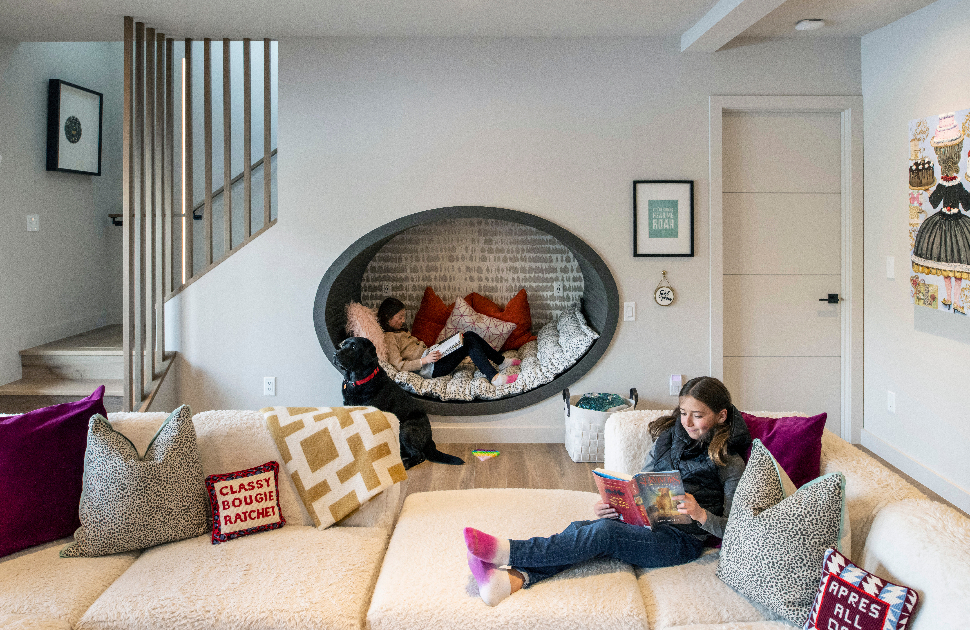
In addition to durable fabrics and furnishings, be sure to choose paints, wallpapers and finishes that last. In her article “How to Design a Kid’s Room” for Real Homes, Sarah Warwick explains exactly how to choose finishes for a playroom. She suggests swapping a high-gloss paint for a matte or semi-gloss finish.
Warwick recommends “wipe-clean versions rather than traditional matte paints to keep the walls in a good state for longer.” If you have young kids who simply cannot resist drawing on the walls, consider creating a feature wall with chalkboard paint.
Peel-and-stick wallpaper that can be cleaned — or even removed — easily is another great option when designing kids spaces. We suggest a patterned wallpaper that can hide scratches, splatter and other messes. A durable patterned wallpaper is perfect for high-traffic areas.
If your kids pick a more expensive or more delicate wallpaper for their playroom, find small ways to incorporate the print they love. For the walls and reading nook in our Mountain Lane Show House, we chose Schumacher’s Queen of Spain wallpaper. Mount special wallpapers in a low-risk area — i.e. one where your kids are unlikely to have food, markers or other messy items. The reading nook pictured above is the perfect spot for a stunning wallpaper your kids adore.
Lastly, be sure to choose low or no-VOC paints that are safe for pets, infants, children and adults alike.
#7 Cater to Their Favorite Hobbies and Pastimes
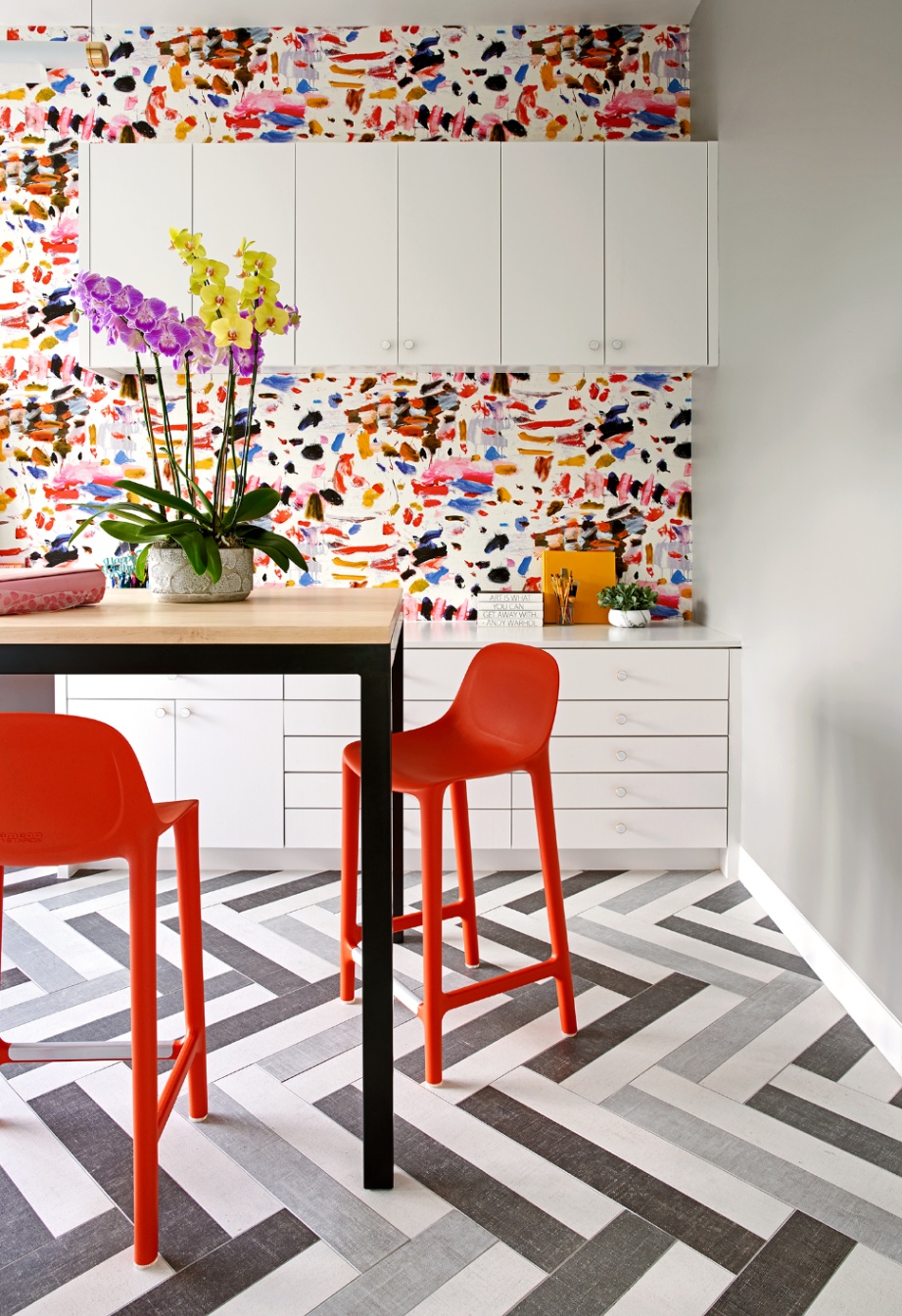
When designing kids playrooms, try to cater to their favorite hobbies and pastimes. If the space is designed to foster their passions, they will spend more time enjoying the playroom while doing what they love. Centering a playroom around hobbies and pastimes also leads to more productive play-dates and gatherings. Instead of sitting around watching television, kids are encouraged to play games, craft together, conduct science experiments and more. Plus, your kids will know how much you respect and appreciate their unique interests.
You might also consider dedicating space to a shared hobby — whether in its own room or a corner of the family room. In our recent Braeswood Place project — which was a collaboration with studioMET and the homeowners — we created a craft room for our clients’ daughter. The homeowner and her daughter love to scrapbook together. We worked alongside studioMET to create custom-sized cabinets perfect for their paper and equipment.
A space like the craft room pictured above is grown-up enough for a teenager, but bright and playful enough for a small child. It can easily adapt to the evolving needs of any family.
#8 Find Ways to Incorporate Kids’ Ideas in Shared Spaces
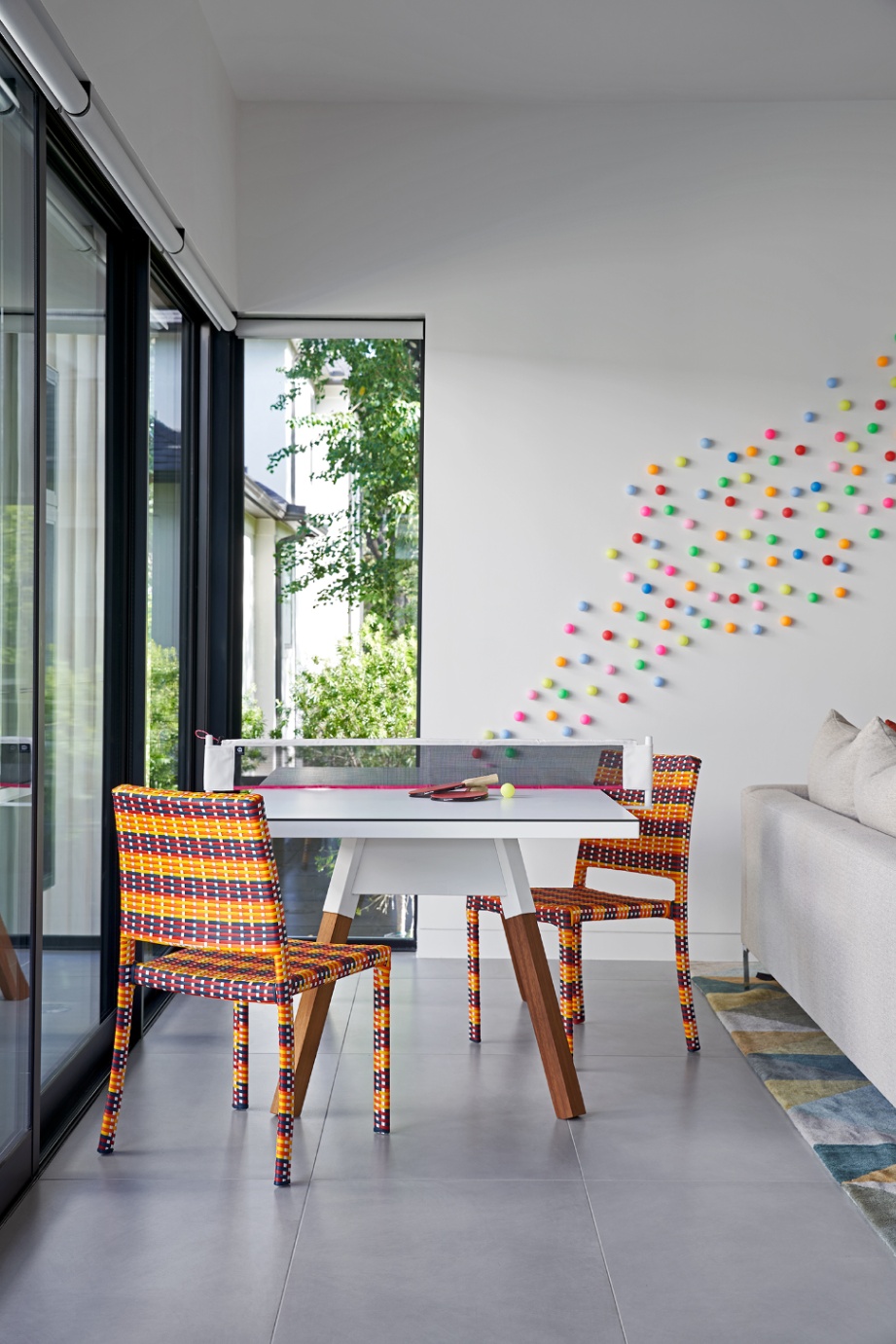
Next in our list of tips for designing kids playrooms is to find ways to incorporate kids’ ideas, hobbies and interests in shared spaces. If they love a specific color or pattern, find ways to add accents around the room. If your kids’ love a specific game, find a fun way to include that. We did exactly that in our recent Braeswood Place project. Our design team created a cheeky art installation that meshes with the ping-pong dining table in our clients’ pool house.
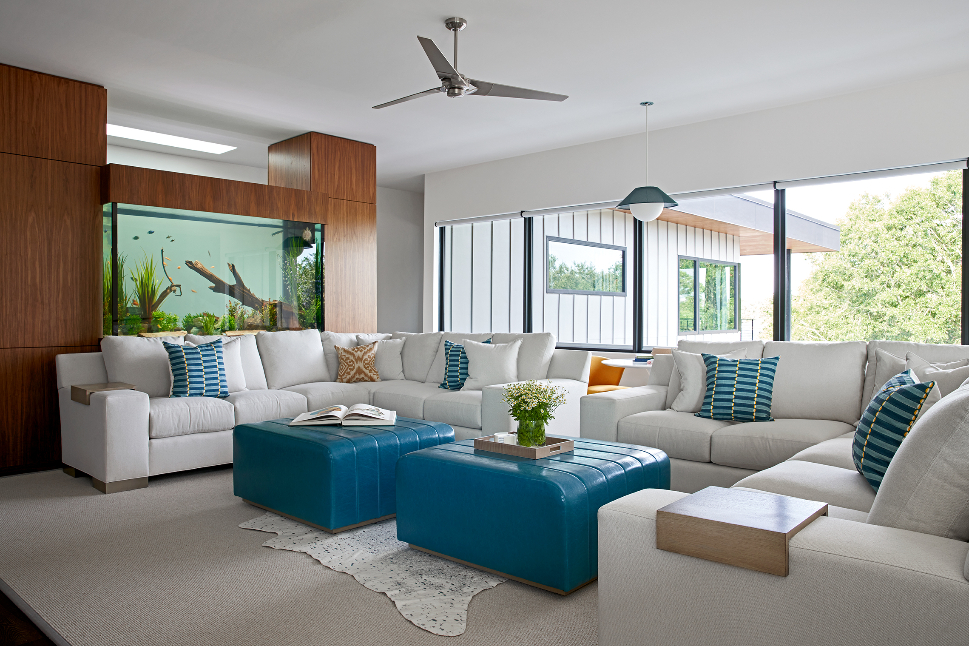
Also look for ways to accommodate activities you enjoy as a family. In the Braeswood Place family room, we made sure to leave plenty of space for the clients’ kids to gather with their friends. With all that extra seating, our clients’ kids are now more likely to bring their friends around. With two large square-shaped ottomans, there is enough of space for kids to play board games and puzzles too!
#9 Take Advantage of Awkward or Unusual Spaces
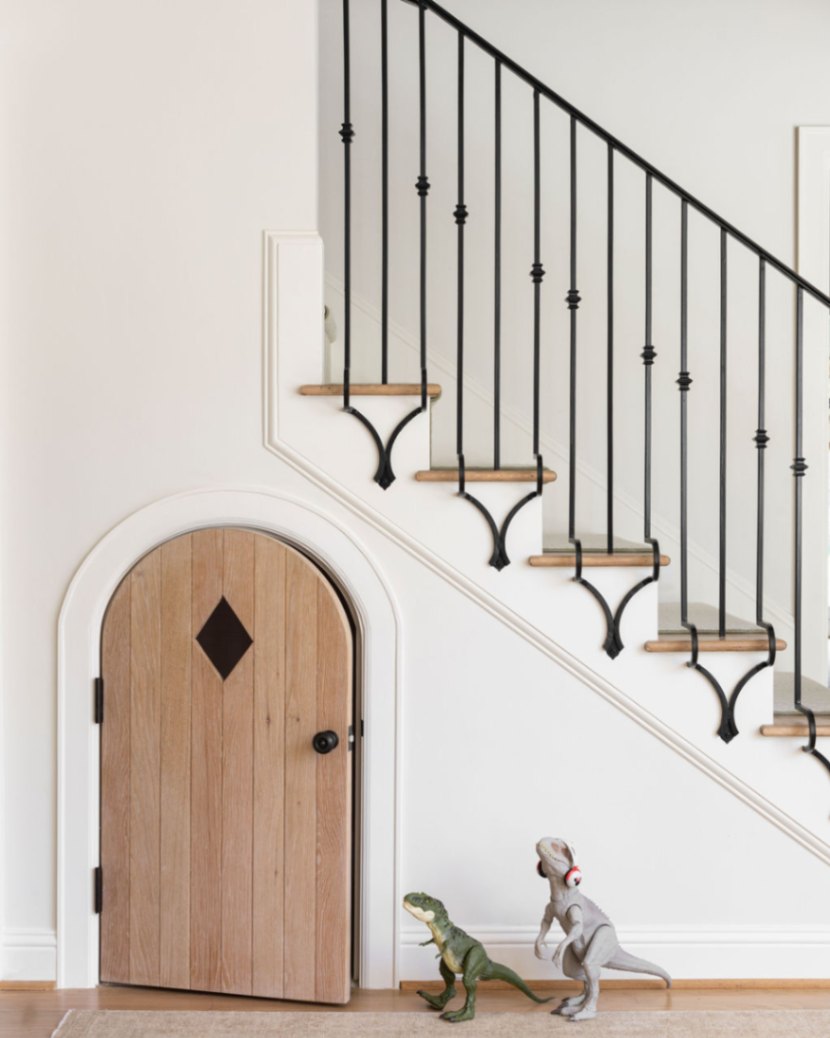
Some rooms are too small for an extra bedroom or a home office. Others are too far from the kitchen or disconnected from the backyard to use for entertaining guests. An awkward alcove or other odd space might not work well for adults. However, it can be perfect for a kids’ playroom, study or reading nook. If well-executed, an unusual space can feel special to kids. After all, it was transformed into a space just for them, and that is absolutely magical.
As part of our Hedwig Village project, LUDC Creative Director Gina Elkins found the perfect way to utilize that awkward space beneath the stairs. Gina sketched the doorway pictured above right onto the wall during a sight visit. Perfectly sized for our clients’ little girl, this stair nook is her gateway into an entire world of imaginative play.
#10 Encourage Kids to Be Active in the Design Process
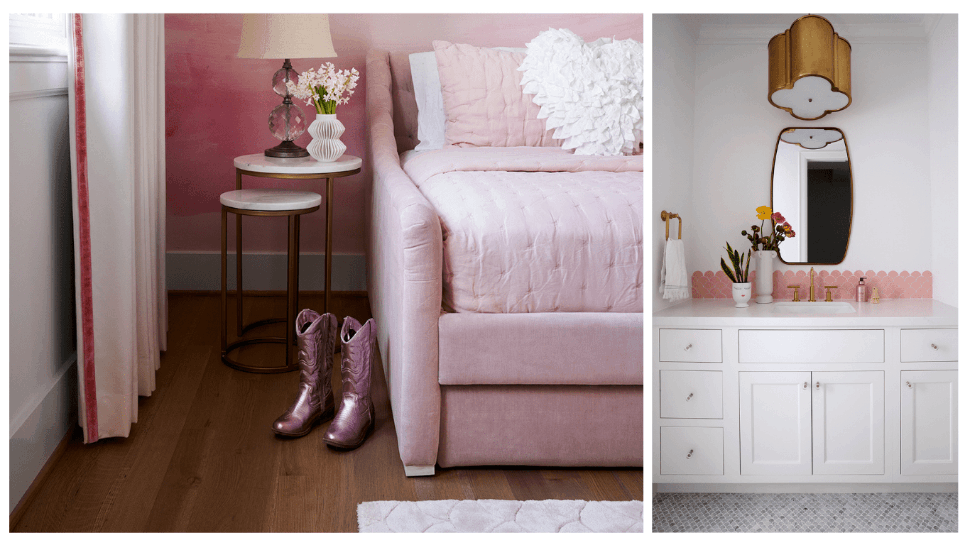
Designing for kids is easiest when you allow children to participate in the design process. In our University Place project, we did exactly that. Secure in her own distinct style, our clients’ young daughter worked closely with our design team when creating the bedroom and bathroom pictured above.
Most of the furniture in the girl’s bedroom was existing, but we updated the window treatments, wallcoverings and light fixtures. We refined the palette slightly and chose elegant accents she can continue to enjoy as she ages.
We hope you enjoyed this list of kids playroom design tips! Let us know if you have any questions in the comments below!


